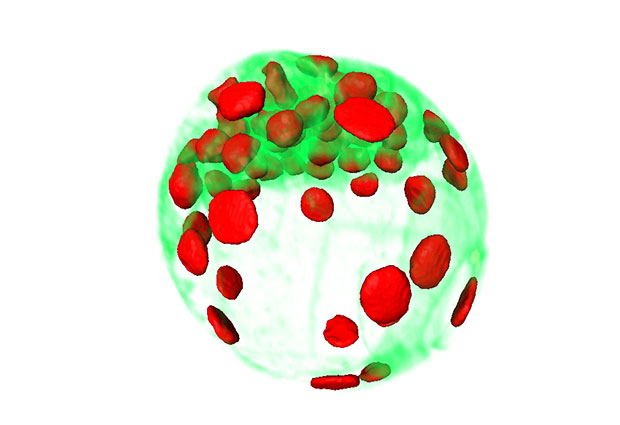Turning point of a lifetime

VIDEO: EMBL/Petr Strnad
For the first time, scientists can observe the first two to three days of a mouse embryo’s life, as it develops from a fertilised egg up to the stage when it would implant in its mother’s uterus, thanks to a new light sheet microscope developed at the European Molecular Biology Laboratory (EMBL) in Heidelberg, Germany.
“When I first saw the videos, I said ‘This is a breakthrough – nobody has ever seen this before!’” says Jan Ellenberg, who led the work. “The beginning of our own lives looks like this, and we could never look at it before. Now there’s so much we can learn!”
VIDEO: EMBL/Petr Strnad
Starting from the first cell, the EMBL scientists can track each cell’s daughters, grand-daughters, great-granddaughters, and so on, so that, at any given moment, they know each cell’s exact family tree. This has enabled them to identify a crucial turning point in the embryo’s life.
When the embryo is a sphere made up of 8 cells, the direction in which they divide next stops being random for just one division. At that single moment, the scientists found, most of the embryo’s cells divide in the same direction: one of the daughter cells forms towards the inside of the embryo, the other towards the outside. And from that point on, the fate of a cell’s lineage is set: the cells on the inside will continue to develop into the embryo, while those on the outside will become part of the placenta that supports and nurtures the embryo in the uterus.
The findings, and the technology that enabled them, are published today in Nature Methods.
“People have been really excited whenever I’ve presented this technology and our results with it,” says Ellenberg, “and not just people doing fundamental research; people working in fertility clinics are really interested, too.”



